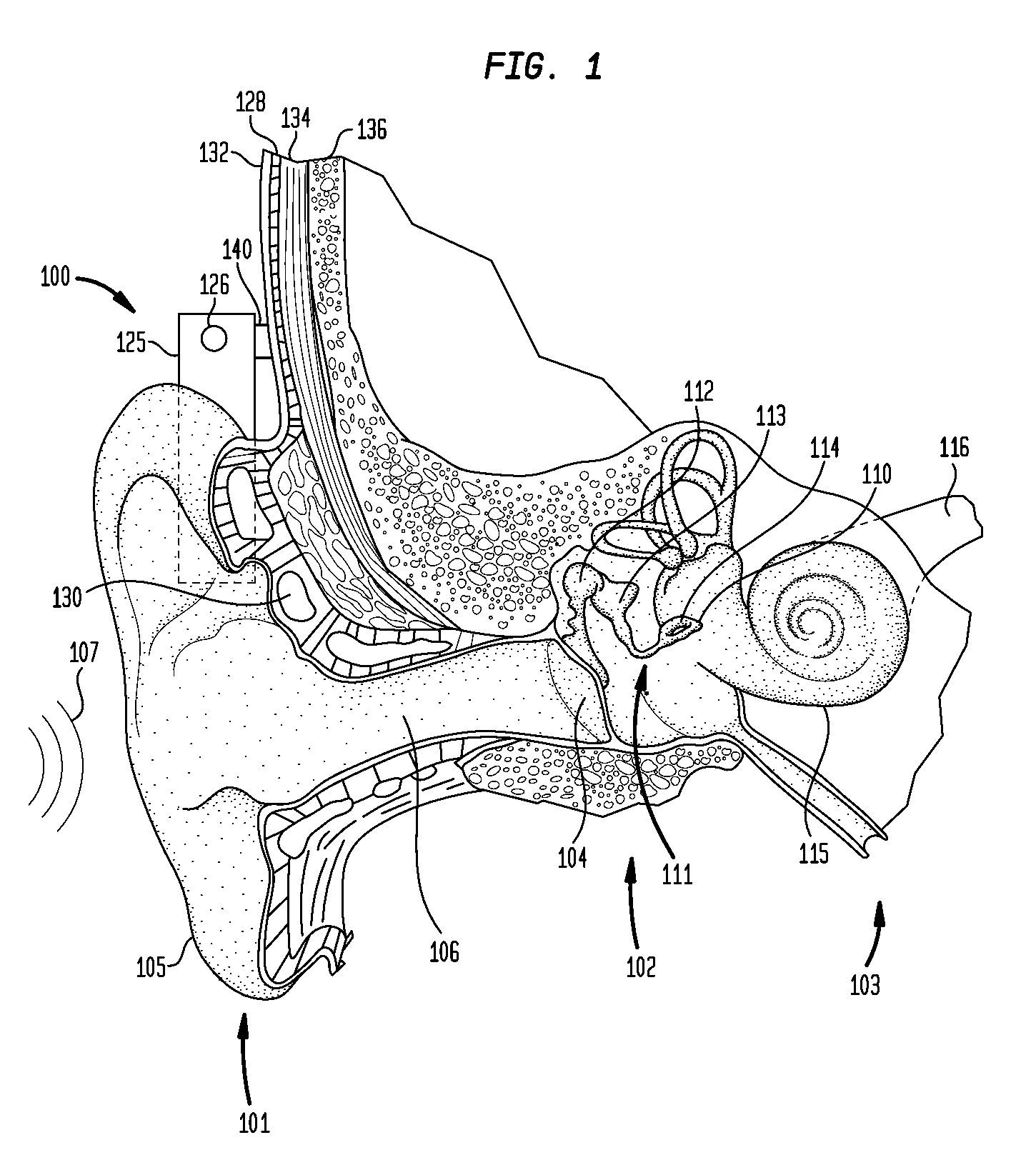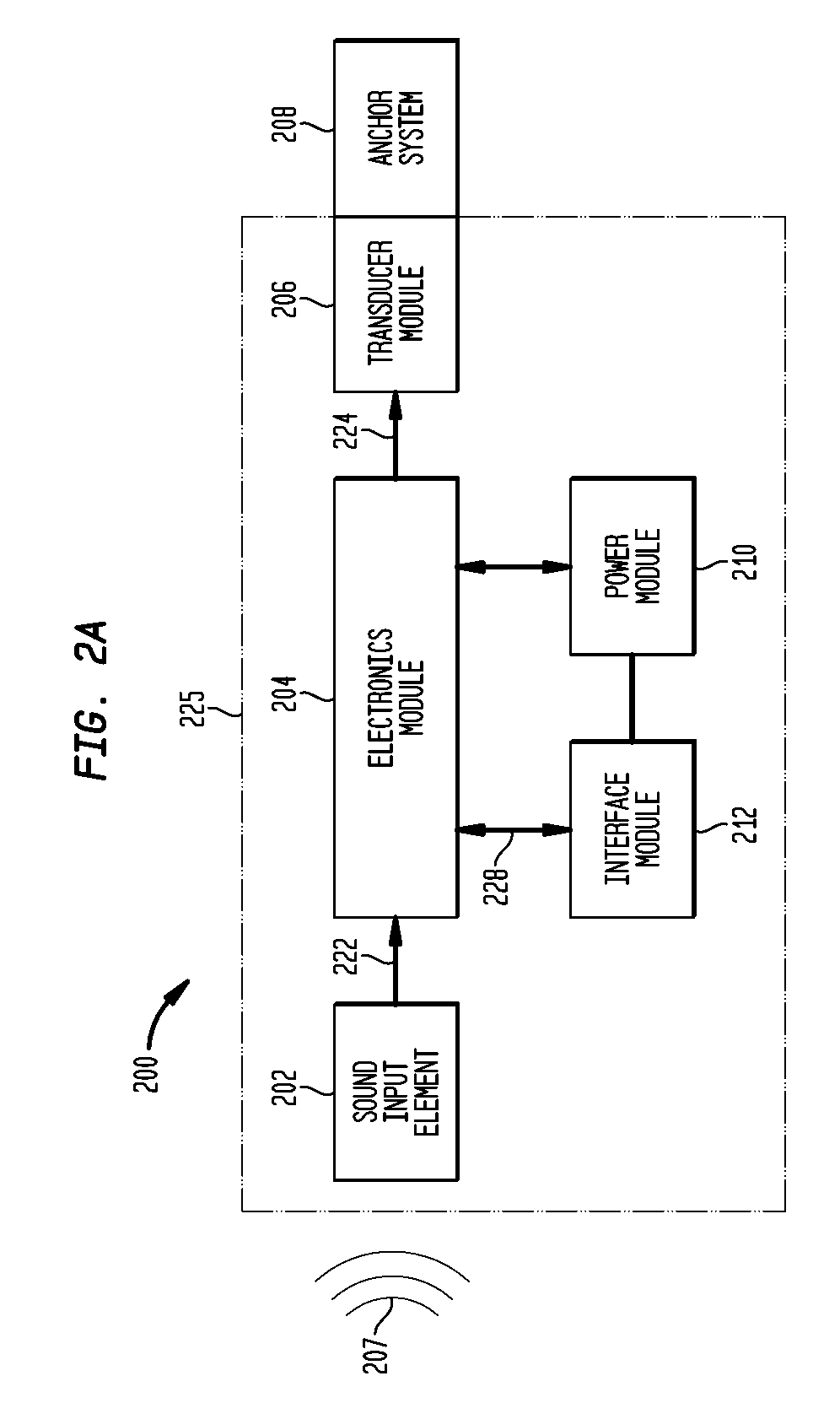Customizable mass arrangements for bone conduction devices
a bone conduction device and mass arrangement technology, applied in the field of prosthetic hearing devices, can solve the problems of conductive hearing loss, damage to the inner ear or the nerve pathway from the inner ear to the brain, and loss of sensorineural hearing
- Summary
- Abstract
- Description
- Claims
- Application Information
AI Technical Summary
Benefits of technology
Problems solved by technology
Method used
Image
Examples
Embodiment Construction
[0026]Embodiments of the present invention are generally directed to a bone conduction device for converting a received acoustic sound signal into a mechanical force delivered via a recipient's skull to the recipient's hearing organs. The bone conduction device receives the acoustic sound signal and generates an electrical signal representing the acoustic sound signal. The bone conduction device includes a transducer which converts the electrical signal into motion of a mass component so as to generate one or more mechanical forces resulting in one or more of motion and vibration of a recipient's skull causing perception of said acoustic signal by the recipient.
[0027]In certain embodiments of the present invention, rather than having a dedicated mass (also referred to herein as a “mass component”) mounted thereto, the transducer has a functional component attached thereto which is used by the transducer to generate the mechanical forces, in addition to performing its own function. I...
PUM
| Property | Measurement | Unit |
|---|---|---|
| Mass | aaaaa | aaaaa |
| Size | aaaaa | aaaaa |
| Mechanical force | aaaaa | aaaaa |
Abstract
Description
Claims
Application Information
 Login to View More
Login to View More - R&D
- Intellectual Property
- Life Sciences
- Materials
- Tech Scout
- Unparalleled Data Quality
- Higher Quality Content
- 60% Fewer Hallucinations
Browse by: Latest US Patents, China's latest patents, Technical Efficacy Thesaurus, Application Domain, Technology Topic, Popular Technical Reports.
© 2025 PatSnap. All rights reserved.Legal|Privacy policy|Modern Slavery Act Transparency Statement|Sitemap|About US| Contact US: help@patsnap.com



